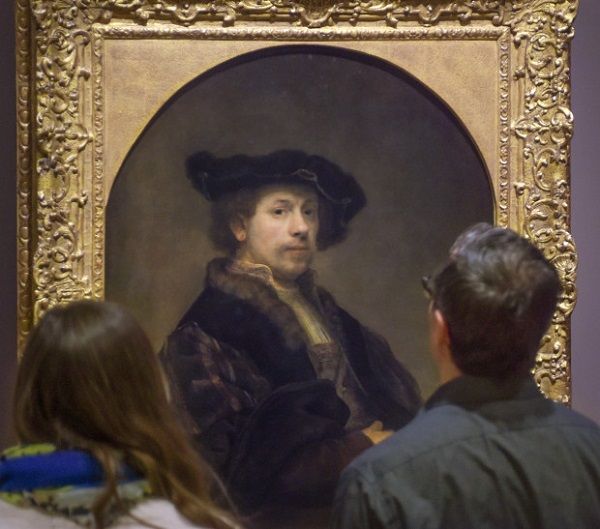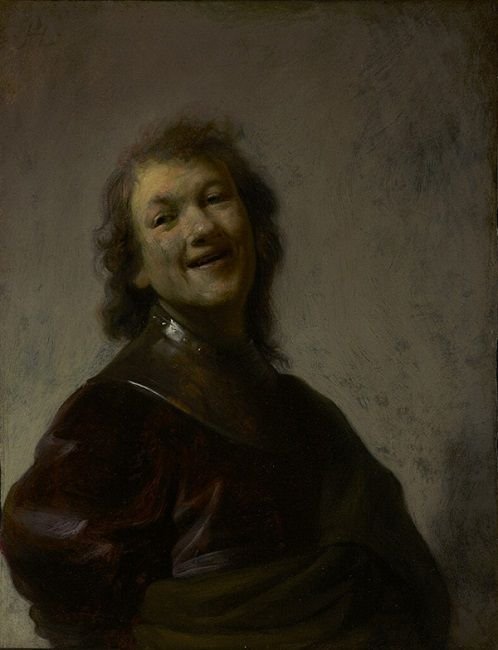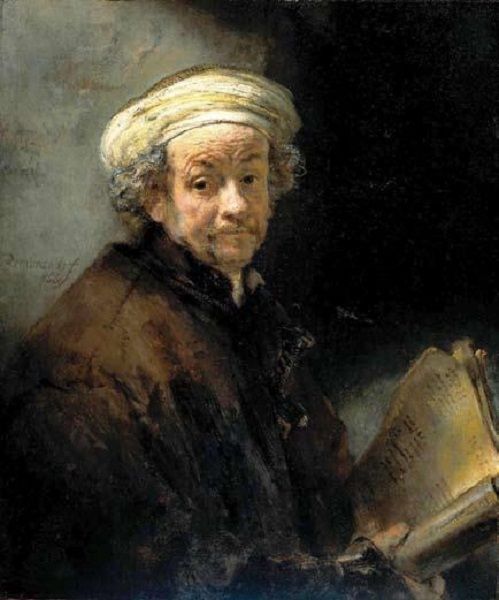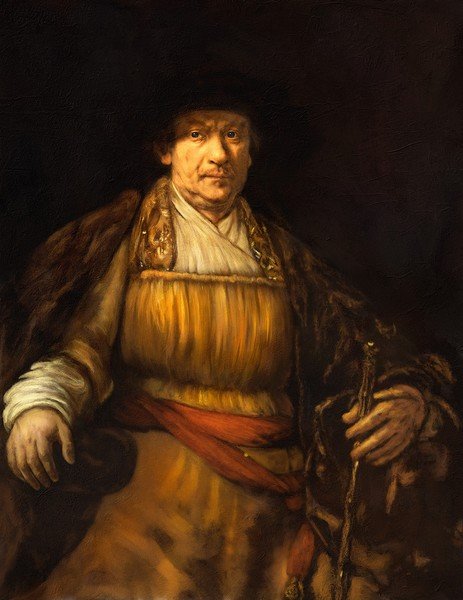Rembrandt Harmenszoon van Rijn is a Dutch painter and engraver, considered to be one of the greatest in the history of European art and the most significant in Dutch history. His creative activity coincided with the era of economic and cultural upheaval, known as the Dutch Golden Age. Rembrandt's style, albeit in many ways opposed to the baroque predominant. At that time in much of Europe, is also characterized by extraordinary abundance and innovation. In his youth, Rembrandt achieved success and reputation as a portrayal, but later in his life he faced personal misfortunes and financial difficulties. Nevertheless, his engravings and paintings remain famous throughout his life. His reputation as a painter does not fall, and he becomes the teacher of many significant Dutch artists of the next generation. Rembrandt's greatest creative achievements are visible in the portraits of his contemporaries, self portraits, and illustrations of biblical scenes. The series of his self portraits form a unique and intimate biography in which the artist is analyzed without vanity and with extreme honesty.
Rembrandt creates the largest number of self-portraits compared to any other great painter in history. Although there are controversies today about the authorship of Rembrandt's earlier paintings, the number of self-portraits in question varies between 86 and 98 (twelve of them still have controversial authorship). Puzzles and controversies have arisen due to his wide technical expertise and the reasons for Rembrandt to be depicted in costumes and hats of different cultures and historical periods. Albert Rottenberg, a professor of psychiatry at Harvard, tries to analyze the compositional characteristic of Rembrandt self-portraits based on the theory of expressive imagery or visual metaphor. He examines the interaction between the expressive part of the artist's face and the distinctive character of the costumes (and hats). An extraordinary feature in Rembrandt's self-portraits analyzed in this study is the visual metaphor that outlines the shaping of Rembrandt's artistic genre - a peculiar visual and visual metaphor of itself. A Greek philosopher tells about the demigod Narcissus, who created the fine art, after seeing his image on the surface of the water. According to this rather mythological and somewhat plausible assumption, self-expression (or, in the modern sense, self-determination) inspires the creative artistic process, and self-portraiture can be seen as the fruit of the artist's main goals. This theory must yield to some more practical and economic motives. Art history specialists note that such works serve as a means of advertising the creator who created them, providing them with greater publicity. In addition, posing for yourself is the most affordable and inexpensive option for an artist. These factors are often critical in the early years of each artist's career and lead to more fruitful results as time progresses. The "available funds" factor most likely acts as a major motive for Rembrandt in a number of self-portraits, even to later canvases.
Of course, here are the stylistic techniques. The large number of self portraits made over a long period of time represents the historical orientation of their author. He portrayed himself in all the periods of his life - from youth to the last year of this world, presenting the artistic point of view of a human history. Although his costumes from different years are sometimes considered strange, the experts call them "the growth of his own historical interests and the persecution of Rembrandt." He has been painted in many forms, modest and lofty, and his costumes offer a wide variety of themes. Due to the author's highly skilful portrayal, his portraits are often referred to as photographic works reflecting the development of his life. Since the available factual information about him is rather scarce - no letters have been found, very little information has been received from students and survived mainly his financial documents. Several periods of his life are like white spots for historians, so some biographers try to retrieve indirect information from his self-portraits to compensate for unaffordable information. They have made several revelations about his fate, such as his financial failure or the death of his wife. Experts try to interpret his reactions directly from the paintings he has created.
Since the artist's early sketches have many facial expressions, the specialists suggest that he used his own image reflected in a mirror to study and practice artistic expression of specific emotional states. Due to lack of modeling tools and the need for cost containment, self-portraiture was most likely extremely useful, especially in its early career, as a cost-effective demonstration of his masterful skills. This expressiveness (the clear representation and consideration of an idea, mood and emotion strongly and vividly) derives from the characteristic of the created visual / visual metaphor of himself. Albert Rottenberg suggests that these drawings, engravings and self-portrait paintings of the author introduce the features of composition, meaning and expressions to create a different artistic genre - a category of artistic endeavor with a certain form, content and technique of the visual / pictorial metaphor . Rembrandt's self-portraits represent a unique contribution, both in terms of their number and quality, to the world of art. They have much to do with the rest of his work, but they also have many distinctive features. These peculiarities, present in most of his self-portraits, are a metaphorical artistic form. This type of aesthetic metaphor is similar to literary - especially in poetry. The visual / visual autonomous metaphor, similar to literary metaphors, is extremely rich and expressive. The metaphorical structure of the image derives from its components and is integrated through the compositional features of the artist's work. The image of Rembrandt, painted metaphorically, represents the entire universe of art and the artist himself.
The effective creation of metaphors has similar roots in both the verbal and the visual spheres. Albert Rottemberg suggests that the artist creates a visual / metaphorical metaphor through the techniques of transmitting more voluminous, extreme, or "exaggerated" spaces than they actually are in physical reality (a pictorial exaggeration that aims to deceive your brain, giving more emotional and meaningful value). This process consists in the active manipulation of space, with the aim of hinting in shapes, patterns, words, dimensions, distances, and even objects, prompting the mind to accept an idea that leads to articulation (a performance within the art) of a new identity. Creativity and visual / metaphorical metaphors are produced by precisely this complex spatial process characteristic of fine arts.




This is a really good contribution to the comunity! Add knowledge and culture! Thanks for sharing... Reestemit!
Downvoting a post can decrease pending rewards and make it less visible. Common reasons:
Submit
You are welcome :)
Thank you :)
Downvoting a post can decrease pending rewards and make it less visible. Common reasons:
Submit
Just saw a few of the originals at the Louvre in November, and they are breathtaking. It is fascinating to watch his physical and emotional changes through his paintings, over his lifetime. He was truly a unique painter in his time. Thanks for sharing this wonderful post!
Downvoting a post can decrease pending rewards and make it less visible. Common reasons:
Submit
I envy that you saw them at the Louvre :D
Thank you for the comment :)
Downvoting a post can decrease pending rewards and make it less visible. Common reasons:
Submit
Thank YOU for sharing beautiful art!
Downvoting a post can decrease pending rewards and make it less visible. Common reasons:
Submit
this person gave us honesty and a mirror to look at ourselves throughout his career.
Downvoting a post can decrease pending rewards and make it less visible. Common reasons:
Submit
Yep :)
Downvoting a post can decrease pending rewards and make it less visible. Common reasons:
Submit
Thanks for this article. I didn't know Rembrandt is that famous with his self portraits. He is the first selfie master ;D
Downvoting a post can decrease pending rewards and make it less visible. Common reasons:
Submit
Yes he is :) Cheers!
Downvoting a post can decrease pending rewards and make it less visible. Common reasons:
Submit
This post has received gratitude of 3.17 % from @appreciator thanks to: @godflesh.
Downvoting a post can decrease pending rewards and make it less visible. Common reasons:
Submit
The article is very interesting. Thank you for sharing .
Downvoting a post can decrease pending rewards and make it less visible. Common reasons:
Submit